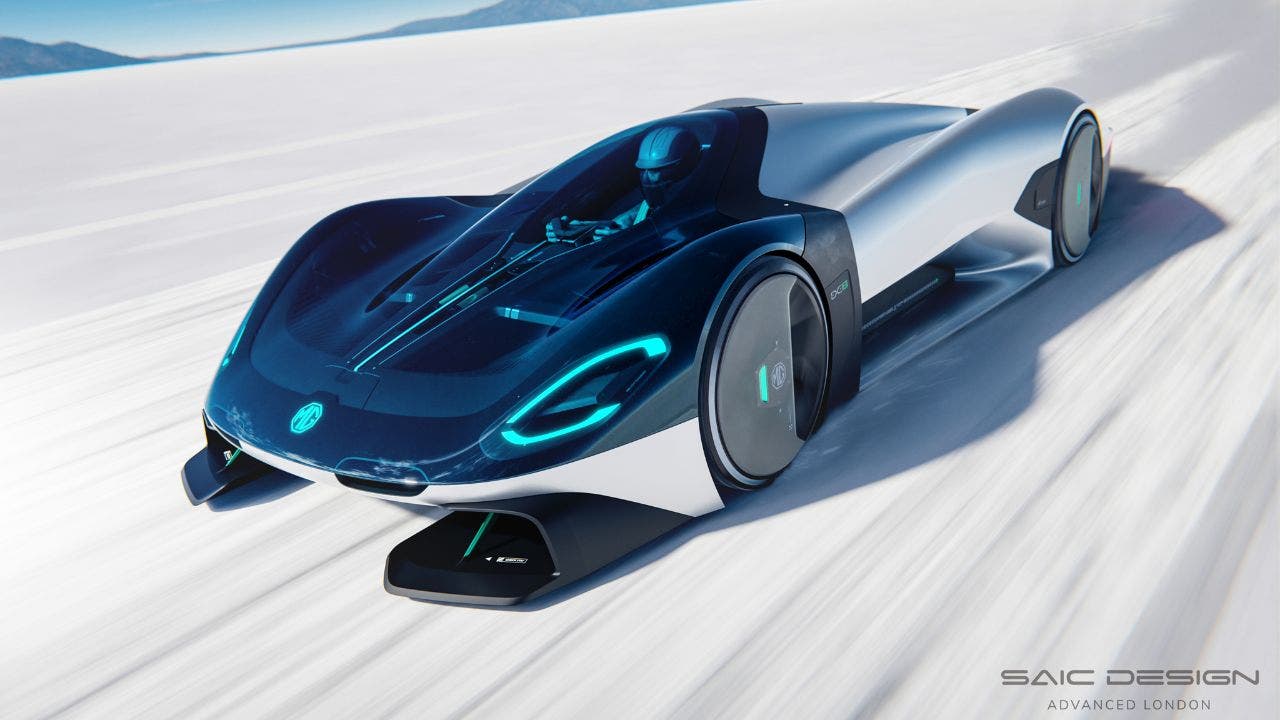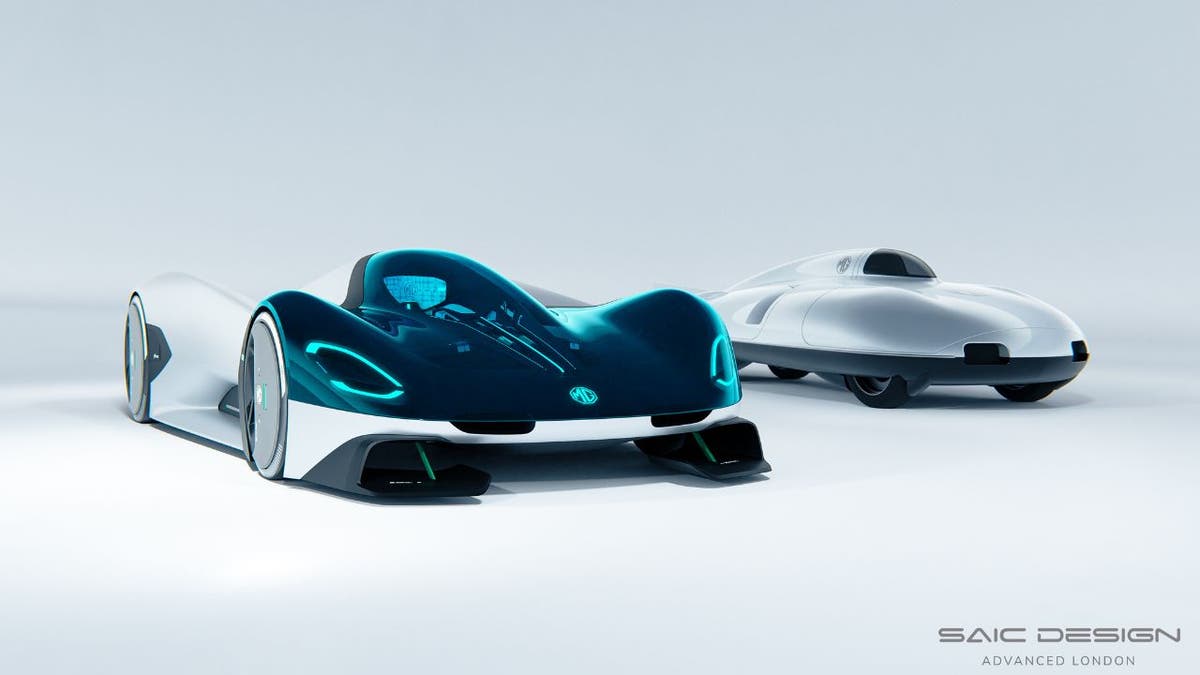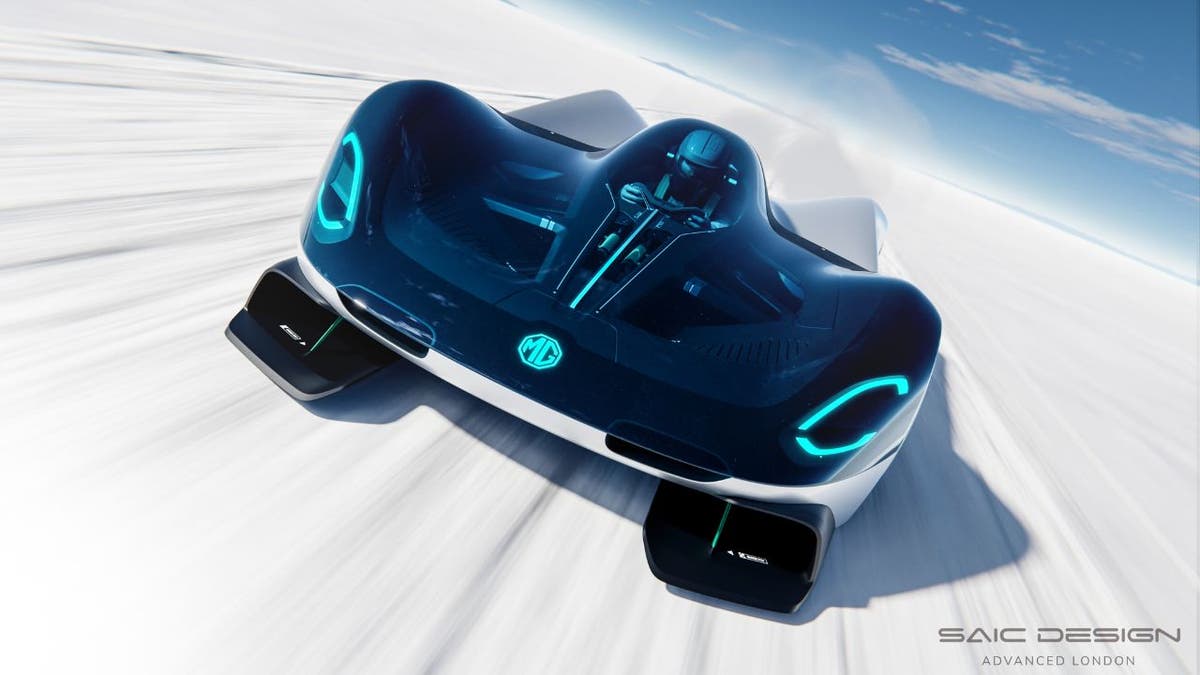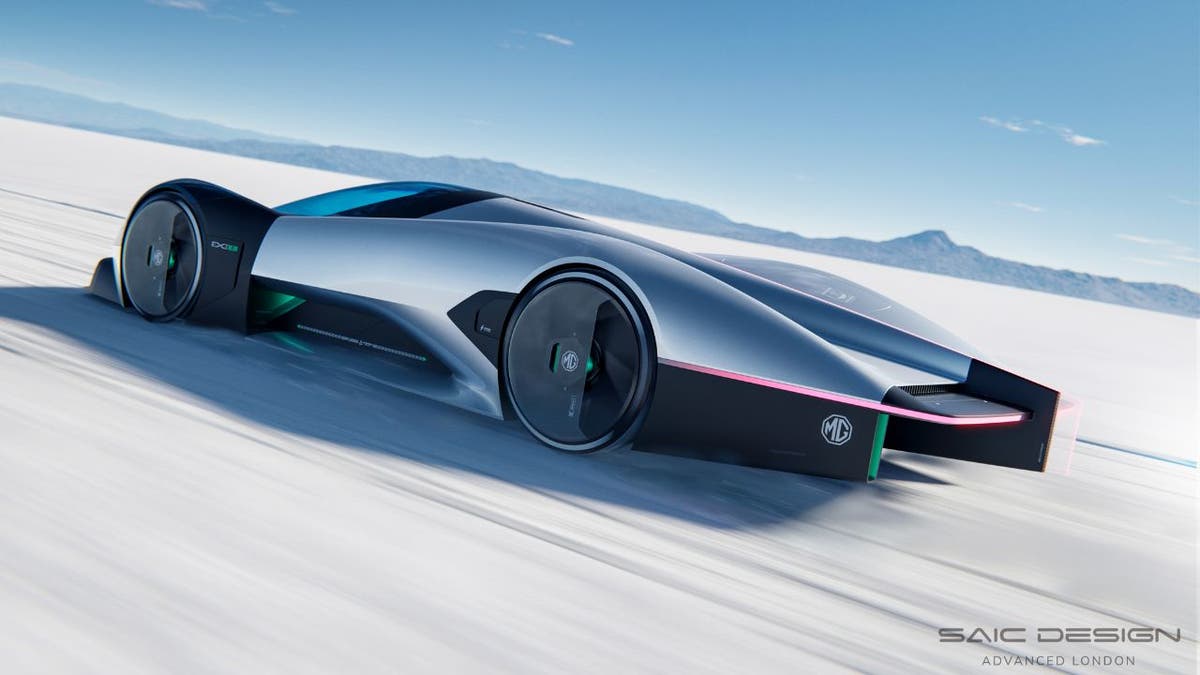Mining for minerals used to make EVs and batteries is plagued with allegations of abuse, the latest report from the nonprofit Business & Human Rights Resource Centre (BHRRC) shows. And automakers continue to source materials from some of the worst offenders, The Verge finds.
Technology
How to Secure Your iPhone, iPad, or Mac With Lockdown Mode

The average iPhone owner should not have to worry about a coordinated cyberattack against them. But in some cases, cybercriminals and other parties will deploy targeted attacks against specific individuals, including government officials, human rights advocates, and journalists. Apple’s Lockdown Mode allows victims to respond in kind to protect themselves.
Available for iPhone, iPad, and Mac, Lockdown Mode was introduced with the release of iOS 16, iPadOS 16, and macOS Ventura. This optional feature effectively disables or restricts certain features and settings on your device. The goal is to prevent malware, spyware, and other threats from exploiting or compromising your personal information.
Though Apple stresses that most people should never have to take the drastic step of enabling Lockdown Mode, knowing how to use this feature is important in case you are in a group or profession that could be targeted by spyware and other threats.
What Does Lockdown Mode Do?
Lockdown mode received attention in 2022 when it thwarted an attack on a human rights group from spyware vendor NSO Group. The PwnYourHome exploit was able to secretly infect the Apple Messages app and tamper with Apple’s HomeKit software. But users with Lockdown Mode enabled received warnings and were able to avoid becoming victims.
So what does the feature actually do? According to Apple, enabling Lockdown mode affects specific apps and features in the following ways:
-
Messages: Other than certain images, video, and audio, most types of message attachments are blocked. Links and link previews, among other features, will also not work. Phone calls, plain text messages, and SOS emergency calls will continue to work.
-
Web browsing: Certain complex web technologies are blocked, an action that could cause some websites to run slower or not work at all. Web fonts will also not display and images may not appear.
-
FaceTime: All incoming FaceTime calls are blocked unless you have already called the person on the other end.
-
Apple services: Apple’s own services are limited so that incoming invitations, such as those to manage a home in the Home app, are blocked unless you have previously invited that person.
-
Shared Albums: Shared albums are removed from the Photos app, while new Shared Album invitations are blocked. You can still view shared albums on other devices that don’t have Lockdown Mode enabled. After turning off Lockdown Mode, you will need to turn on Shared Albums again in your device settings.
-
Device connections: To connect your iPhone or iPad to an accessory or another computer, the device will need to be unlocked. To connect your Mac laptop with an Apple chip(Opens in a new window) to an accessory, you need to unlock your Mac and explicitly approve the action.
-
Configuration profiles: You cannot install configuration profiles or enroll your device in Mobile Device Management or device supervision.
Enable Lockdown Mode on an iPhone or iPad

(Credit: Lance Whitney/Apple)
In order to enable Lockdown Mode on your mobile device, you must be running iOS 16 or iPadOS 16. Open Settings > General > Software Update to check. You’ll be told that your OS is up to date or prompted to install the latest update.
To turn on Lockdown Mode on an iPhone or iPad, go to Settings > Privacy & Security. Swipe down to the bottom of the screen and tap the Lockdown Mode option. Tap Turn On Lockdown Mode to get things started.

(Credit: Lance Whitney/Apple)
The next screen will go over how Lockdown Mode will affect your device. At the bottom, tap Turn On Lockdown Mode. A confirmation message pops up asking if you want to confirm. Tap Turn On & Restart and enter your passcode to make your iPhone or iPad restart.

(Credit: Lance Whitney/Apple)
Sign back in to your device to see what features and functions are disabled or restricted with Lockdown Mode is in effect. As you can see, Screen Time will stop working, certain message will be unable to open, and incoming FaceTime calls will be blocked.
When you are ready to turn off Lockdown Mode, go back to Settings > Privacy & Security and tap Lockdown Mode. Tap Turn Off Lockdown Mode and then tap Turn Off & Restart. Enter your passcode to restart your device.

(Credit: Lance Whitney/Apple)
Once your device has been restarted, sign back in and see that the features that were once disabled or limited are now working properly again.
Recommended by Our Editors
Enable Lockdown Mode on a Mac

(Credit: Lance Whitney/Apple)
To try Lockdown Mode on your Mac, make sure you are running macOS Ventura or higher. To update from a previous version, click the Apple menu icon and select About this Mac. Click the button for Software Update and then click the Upgrade Now button.
To enable Lockdown Mode, go to System Settings and select Privacy & Security. Scroll down the screen and click the Turn On button next to Lockdown Mode. Confirm the action with your password or Touch ID, then click the Turn On & Restart button.

(Credit: Lance Whitney/Apple)
Sign back in to your Mac to see that many of the features on your computer have been restricted or disabled completely. For instance, you can’t open certain messages while in Lockdown Mode.

(Credit: Lance Whitney/Apple)
To turn off Lockdown Mode, go back to System Settings > Privacy & Security. Scroll down the screen and click the Turn Off button next to Lockdown Mode. Confirm the action with your password or Touch ID. Then click the Turn Off & Restart button.
Sign back in to see that the features and actions that were restricted by Lockdown Mode have now been lifted so everything should now work as intended again.
Apple Fan?
Sign up for our Weekly Apple Brief for the latest news, reviews, tips, and more delivered right to your inbox.
This newsletter may contain advertising, deals, or affiliate links. Subscribing to a newsletter indicates your consent to our Terms of Use and Privacy Policy. You may unsubscribe from the newsletters at any time.

Technology
The EV industry can’t shake its human rights abuse problem
/cdn.vox-cdn.com/uploads/chorus_asset/file/25453128/1265758482.jpg)
BHRRC has documented 631 allegations of human rights abuses since 2010 for seven key minerals used in electric vehicles, rechargeable batteries, and renewable energy technologies. Many of the allegations were made against a small group of companies, which The Verge was able to link to three of the world’s biggest EV manufacturers: Volkswagen Group, Tesla, and BYD.
“Things are not improving,” said Caroline Avan, head of natural resources and just transition at BHRRC. The need for more renewable energy and clean transportation is evident, but those technologies shouldn’t come at the expense of people who live and work in places where companies source their raw materials, she said.
“Things are not improving.”
“The fight against climate change is a human rights imperative at this point in time, but it should not be seen as a license to just disregard human rights in mining operations,” Avan said.
An electric vehicle requires about six times as many minerals as a typical gas-guzzling car. Demand for critical minerals used in EVs and battery storage for renewable energy could grow tenfold by 2040, under a conservative estimate by the International Energy Agency. Scrambling to secure all those minerals without taking the time to make sure they’re mined humanely is where problems arise.
BHRRC’s latest report includes potential abuses linked to the mining of seven minerals: bauxite, cobalt, copper, lithium, manganese, nickel, and zinc. It’s been tracking those allegations since 2019 using publicly available records, including court documents and regulatory resources, as well as reports from other nongovernmental organizations and media outlets.
It found 91 more allegations in the past year alone, including a “marked increase in labour rights violations and worker deaths” that made up roughly 40 percent of the new allegations in 2023. Across its entire data set going back to 2010, labor violations including 53 work-related deaths make up a quarter of all allegations. For 2023, alleged attacks against human rights defenders, water pollution, and threats to water access are also glaring issues.
It found 91 more allegations in the past year alone, including a “marked increase in labour rights violations and worker deaths”
Since 2010, more than half of the allegations were made against just 10 companies. State-owned China Minmetals now leads the pack, topping Swiss multinational mining giant Glencore, which ranked highest over the past two years.
Combing through sustainability reports and media coverage of the world’s top three EV manufacturers, The Verge found a history of deals with Glencore and China Minmetals.
To drive its EV ambitions, Volkswagen entered into an agreement with Glencore and battery maker Contemporary Amperex Technology Co Ltd (CATL) back in 2017, Reuters reported. Under the agreement, CATL would buy 20,000 metric tons of cobalt products from Glencore for Volkswagen’s EV batteries.
In 2023, VW’s battery division PowerCo initially agreed to back a SPAC deal alongside Glencore and Stellantis to buy nickel and copper mines in Brazil — although the deal reportedly fell through later that year over price squabbles. Volkswagen has also identified gold sourced by Glencore in its supply chain, according to its 2023 Responsible Raw Materials Report. The company declined to comment on BHRRC’s findings but has said that it is working to comply with Germany’s new Supply Chain Due Diligence Act.
Tesla buys nickel from a Glencore mine in Australia and cobalt from two Glencore mines in the Democratic Republic of Congo according to the company’s 2021 and 2022 impact reports. In 2022, workers at one of those cobalt mines spoke to The Verge about unsafe working conditions without adequate water or breaks and with little food or pay. Cobalt is often called “the blood diamond of batteries” because of the dangers workers face mining it.
Neither Tesla nor Glencore responded immediately to requests for comment from The Verge. Tesla’s 2022 impact report explains that the company conducts audits of its suppliers to improve working conditions at each site and make sure “corrective actions” are taken to address any problems. It touts “working with suppliers where issues are found rather than walking away.”
In the year since then, China’s BYD overtook Tesla to become the world’s biggest seller of EVs — despite its vehicles being unavailable in the US due to high tariffs. China Minmetals also inched past Glencore this year, racking up more allegations of abuse than any other company in BHRRC’s report.
BYD doesn’t name its more than 10,000 suppliers in its 2023 CSR report (Tesla and Volkswagen only give a partial list in their reports). But China Minmetals subsidiary Hunan Changyuan Lico is reportedly one of BYD’s lithium battery material suppliers. BYD didn’t immediately respond to a request for comment.
A separate report by environmental and human rights groups published in February ranked car companies based on how much progress they’ve made to eliminate environmental harms and human rights abuses. Tesla ranked third highest, behind Ford and Mercedes-Benz, in that assessment. Volkswagen ranked sixth, and BYD came in 16th out of 18 companies.
Automakers certainly aren’t the only industry with a lot of work to do to prevent abuse along their supply chains. Rechargeable batteries that power many of the gadgets in our lives are made with a lot of the same materials cited in these reports.
Governments, mining companies, and manufacturers who buy their goods all need to take action to stop abuse, BHRRC’s Avan says. That includes adopting policies that make human rights a priority and that empower people to have a say in projects that might affect their communities.
“[When it comes to] a lot of egregious and gross negligence in occupational health and safety at mining sites, this is not rocket science. Those things can be fixed,” Avan says. “What [manufacturers] should be doing is engaging with the mining sector, asking questions, and putting in front of them the requirements and expectations for better protection of human rights.”
The Verge reached out for comment to each of the 10 companies BHRRC lists as having the most human rights allegations against them. Three of them replied to say that they respond to allegations of abuse and implement changes accordingly, including Freeport-McMoRan, Solway Group, and Tenke Fungurume Mining.
Neither China Minmetals nor Glencore immediately replied to The Verge’s request for comment. But a spokesperson for Glencore commented on BHRRC’s report last year in an email to The Verge to say, “Our assets are located in diverse contexts, some .. in more challenging socio-political circumstances with a history of conflict, limited basic services, and weak rule of law … we work in partnership with government, civil society and development agencies to share knowledge, build capacity and contribute to enduring social and economic outcomes.”
Technology
Aerodynamic electric hypercar is packing some serious horsepower

As the automotive world gathered at the 2024 Beijing International Auto Show, a star was born.
MG unveiled the EXE181 concept, an electric hypercar that had everyone in awe over its aerodynamics.
With a drag coefficient (Cd) of just 0.181, it’s poised to set records if it hits production.
CLICK TO GET KURT’S FREE NEWSLETTER, THE CYBERGUY REPORT
EXE181 concept car. (SAIC Design)
A nod to history
The EXE181 isn’t just a number; it’s a tribute to MG’s storied past. The original EX181 was the chariot that carried Stirling Moss to a world land-speed record in 1957. Fast-forward to today, and MG’s concept car could eclipse the Volkswagen XL1’s record Cd of 0.189 — the best ever for a production car.

EXE181 concept car. (SAIC Design)
Why aerodynamics matter
The less drag a car has, the less energy it needs to move. That’s why the EXE181’s potential as the most aerodynamic production vehicle is such a big deal. It’s not just about beating the likes of McLaren Speedtail or Mercedes-AMG ONE; it’s about leading the charge in energy-wise automotive design.
ASK ANY TECH QUESTION, AND GET KURT’S FREE CYBERGUY REPORT NEWSLETTER HERE

EXE181 concept car. (SAIC Design)
HOW A FORMULA E RACECAR WAS BUILT ENTIRELY FROM RECYCLED ELECTRONIC WASTE
MG’s centenary celebration
2024 marks a century since MG began in Oxford, England, and what better way to celebrate than with the EXE181? It’s a testament to MG’s revival under SAIC’s stewardship and a symbol of its global ambitions. With MG’s exports skyrocketing, the EXE181 could be the crown jewel of a brand reborn.

EXE181 concept car. (SAIC Design)
THE MICRO CAR THAT CAN SQUEEZE INTO JUST ABOUT ANY SPOT
Kurt’s key takeaways
The MG EXE181 represents a brand that’s risen from the ashes, ready to claim its place in the pantheon of automotive greats. As we approach the Goodwood Festival of Speed, all eyes are on MG. Will the EXE181 make the leap from concept to reality? Only time will tell, but one thing is certain: MG is driving into its next century with bold ambition and the wind at its back.
How do you think the advancement in aerodynamics, as demonstrated by the MG EXE181 concept, could shape the future of electric vehicles and their impact on the environment? Let us know by writing us at Cyberguy.com/Contact
For more of my tech tips and security alerts, subscribe to my free CyberGuy Report Newsletter by heading to Cyberguy.com/Newsletter
Ask Kurt a question or let us know what stories you’d like us to cover.
Follow Kurt on Facebook, YouTube and Instagram
Answers to the most-asked CyberGuy questions:
Copyright 2024 CyberGuy.com. All rights reserved.
Technology
Head of Canada’s intelligence agency warns Canadians not to use TikTok
/cdn.vox-cdn.com/uploads/chorus_asset/file/25406819/STK051_TIKTOK_CVirginia_D.jpg)
Canada’s security agency is trying to dissuade Canadians from using TikTok, telling users that their data is “available to the government of China.”
In an interview with CBC News set to air on Saturday, David Vigneault, the director of the Canadian Security Intelligence Service, said that “there is a very clear strategy on the part of the government of China … to be able to acquire … personal information from around the world,” the CBC reports.
“They’re using big data analytics, they have amazing computer farms crunching the data, they are developing artificial intelligence … based on using this data,” Vigneault added.
The Chinese government’s ability to access user data is at the forefront of US efforts to regulate — and potentially even ban — the app. Congress passed a bill that would ban TikTok unless it divests from its Beijing-based parent company, ByteDance, in April. TikTok sued the US government over the law in May, arguing that the looming ban is unconstitutional.
TikTok has previously claimed that staffers in China are unable to access US and European users’ data. The company has undertaken two massive corporate restructuring efforts — Project Texas and Project Clover, referring to the US and European endeavors, respectively — to silo off user data from China. US user data is hosted in Oracle’s cloud infrastructure and isn’t supposed to be accessible by anyone outside the US, though a recent report by Fortune suggests efforts to secure US user data have been “largely cosmetic.”
“These assertions are unsupported by evidence, and the fact is that TikTok has never shared Canadian user data with the Chinese government, nor would we if asked,” TikTok spokesperson Danielle Morgan told The Verge.
-

 World1 week ago
World1 week agoPentagon chief confirms US pause on weapons shipment to Israel
-

 Politics1 week ago
Politics1 week agoRFK Jr said a worm ate part of his brain and died in his head
-

 Politics1 week ago
Politics1 week agoOhio AG defends letter warning 'woke' masked anti-Israel protesters they face prison time: 'We have a society'
-

 News1 week ago
News1 week agoNine Things We Learned From TikTok’s Lawsuit Against The US Government
-

 Education1 week ago
Education1 week agoVideo: Police Use Pepper Spray on Protesters on G.W.U.’s Campus
-

 Politics1 week ago
Politics1 week agoBiden’s decision to pull Israel weapons shipment kept quiet until after Holocaust remembrance address: report
-

 World1 week ago
World1 week agoA look at Chinese investment within Hungary
-

 News1 week ago
News1 week agoThe Major Supreme Court Cases of 2024














